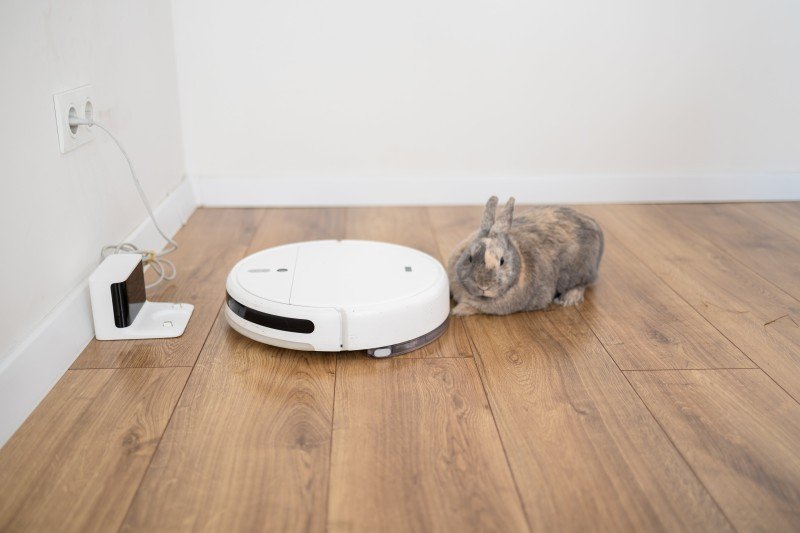The Rise of Robot Vacuum Cleaners: A Comprehensive Guide
In current years, robotic innovation has permeated various aspects of every day life, significantly modifying how tasks are accomplished. Among robot cleaner vacuum and mop in this area is the arrival of robot vacuum. These gadgets have actually moved from a high-end item to an important family tool, supplying convenience and effectiveness to millions of users around the globe. This post will explore the mechanics, benefits, limitations, and popular designs of robot vacuum, along with address some regularly asked questions.
What is a Robot Vacuum Cleaner?
A robot vacuum cleaner is an autonomous device developed to clean floors without human intervention. Equipped with sensing units, brushes, and vacuum innovation, these small makers can browse a home, efficiently choosing up dirt, dust, and debris. Many modern designs come with numerous features, including Wi-Fi capability, smart device applications, and home mapping innovation, which enable users to keep track of cleaning progress remotely.
How Robot Vacuum Cleaners Operate
Robot vacuums make use of several technologies to ensure effective cleaning. Below are the main components that contribute to their functionality:
- Navigation Sensors: Most robot vacuums include numerous sensors (infrared, ultrasonic, etc) that assist discover challenges, stairs, and walls, allowing the device to navigate a room effectively.
- Suction Mechanism: The vacuum employs a suction system to collect dirt and dust from surface areas. Numerous designs utilize advanced cyclonic technology to improve suction power.
- Cleaning Brushes: Different kinds of brushes (side brushes, rolling brushes) help in loosening dirt and guiding particles into the vacuum's suction area.
- Battery System: Operating on rechargeable batteries, robot vacuums can clean autonomously for a predetermined period before going back to their docking station to charge.
- Smart Features: Many models are equipped with Wi-Fi connection, enabling users to control cleaning schedules, suction power, and zoning by means of smartphone apps. Some even support voice control through clever home devices like Amazon Alexa and Google Assistant.
Advantages of Robot Vacuum Cleaners
The combination of robot vacuum cleaners into daily cleaning jobs offers numerous significant advantages:
- Time-Saving: They carry out cleaning autonomously, allowing users to concentrate on other essential activities.
- Consistent Cleaning: Robot vacuums can clean on a regular schedule, ensuring that dirt and dust do not accumulate.
- Benefit: Most designs can be operated while users are out of your house, or even from remote locations through smartphone apps.
- Space Efficient: With their compact design, they can access locations that traditional vacuums can not, such as under furnishings and in tight spaces.
- Smart Technology: The added functions, such as mapping and scheduling, supply users with enhanced control over their cleaning regimens.
Limitations of Robot Vacuum Cleaners
Despite their many benefits, robot vacuums do include some restrictions:
- Initial Cost: High-quality robot vacuums can be more costly than traditional vacuums, which might discourage some consumers.
- Handbook Assistance Needed: Robot vacuums may struggle with big particles or thick carpets, requiring occasional manual vacuuming.
- Battery Life: Depending on the model and the size of the home, the battery life might restrict how much location can be cleaned up in one session.
- Maintenance: Regular upkeep, such as emptying the dustbin and cleaning brushes, is vital to keep the vacuum operating efficiently.
Popular Robot Vacuum Models
Here's a table comparing some of the top-rated robot vacuum on the market:
| Model | Suction Power | Battery Life | Smart Features | Price Range |
|---|---|---|---|---|
| iRobot Roomba 980 | High | Up to 120 minutes | Wi-Fi, App Control, Alexa | ₤ 600 - ₤ 800 |
| Roborock S7 | Extremely High | As much as 180 min | Mapping, Virtual Barriers, App | ₤ 400 - ₤ 600 |
| Ecovacs Deebot OZMO T8 | High | Up to 240 min | AI Smart Navigation, App Control | ₤ 600 - ₤ 700 |
| Neato Botvac D7 | High | Up to 120 min | Mapping, Zone Cleaning | ₤ 600 - ₤ 700 |
| Shark IQ Robot | Moderate | Up to 90 minutes | Self-Cleaning, App Control | ₤ 400 - ₤ 500 |
FAQs About Robot Vacuum Cleaners
Q1: Can robot vacuum change traditional vacuums?
While robot vacuums can significantly minimize the requirement for standard vacuuming, they are best utilized as a complementary tool rather of a total replacement. For deep cleaning or larger debris, traditional designs might still be necessary.
Q2: Are robot vacuums effective on all kinds of floor covering?
A lot of robot vacuums carry out well on tough surfaces like tile and wood, along with low-pile carpets. However, users with high-pile carpets might find minimal effectiveness and needs to think about specific models designed for those surface areas.
Q3: How do robot vacuums handle pet hair?
Numerous designs are specially created with powerful suction and rubber brushes that efficiently collect family pet hair from carpets and furnishings. It's recommended to examine evaluations focusing on pet owners' experiences for better insights.
Q4: Do robot vacuums need much upkeep?
Robot vacuums do require some upkeep. Users need to regularly empty the dustbin, clean the brushes and sensing units, and look for any blockages to maintain optimum efficiency.
Robot vacuum have actually altered the cleaning landscape, providing users time-saving, efficient, and hassle-free solutions to floor upkeep. While they may not completely change standard vacuums, their combination into families signifies a step forward in how we approach home cleanliness. As technology continually progresses, we can expect a lot more innovations in this area-- making robot vacuums an ever-relevant home tool.

